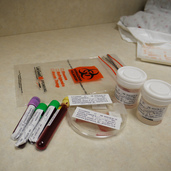
competing interests in a less extreme manner, and through the use of empirical evidence. For example, Australia has a policy where blood donations are deferred for only twelve months. A study shows that Australia did not see an increase in contaminated blood donations when it moved to this model. However, as highlighted below, ideally the health of the donor should be determined based on a donor's behaviour and not on his sexual orientation.
This change may also reverberate to affect those who can be a sperm donor in Canada. Currently, the Semen Regulations under Canada's Food and Drug Act only allow specific men to donate sperm. Restricted men include any man who has had sex with another man since 1977 (following from the ban on blood donation by gay males). If a man who has had sex with another man even once since 1977 wants to donate sperm, special permission needs to be obtained unless the sperm is being used by the donor's sexual partner. The regulation points to an increased likelihood of such a donor being infected with HIV.
This policy is unnecessarily discriminatory. It affects who can be a parent or a donor, and puts gay men at a disadvantage, regardless of the man's HIV status, whether he is in a monogamous relationship, and whether he even lives as a gay male or only engaged in sex with a man once back in 1980. If the government's concern is the health of recipients of donor sperm, it should be looking for indications of the donor's health and behaviour, as opposed to his sexual orientation or gender. For example, the current Semen Regulations (which I expect will fall by the wayside as soon as the federal government proclaims the new section 10 of the Assisted Human Reproduction Act and the regulations thereto to be in force), require that any donor sperm provided for the use of someone who is not the sexual partner of the donor be quarantined for six months in order to protect against HIV and other transmittable diseases. If all donor sperm needs to be quarantined and tested anyways, why is that insufficient for gay males but sufficient for heterosexual males? Regardless, I'm hopeful that the change made to the restrictions on gay males donating blood will signify at least a similar change to the restrictions on gay males donating sperm (and that both policies will continue moving in the appropriate direction).
NB: I admit that I do not have scientific training so if I am missing something here, feel free to school me. As the policy stands, it seems to me like discrimination without the science or logic to back it up.

 RSS Feed
RSS Feed